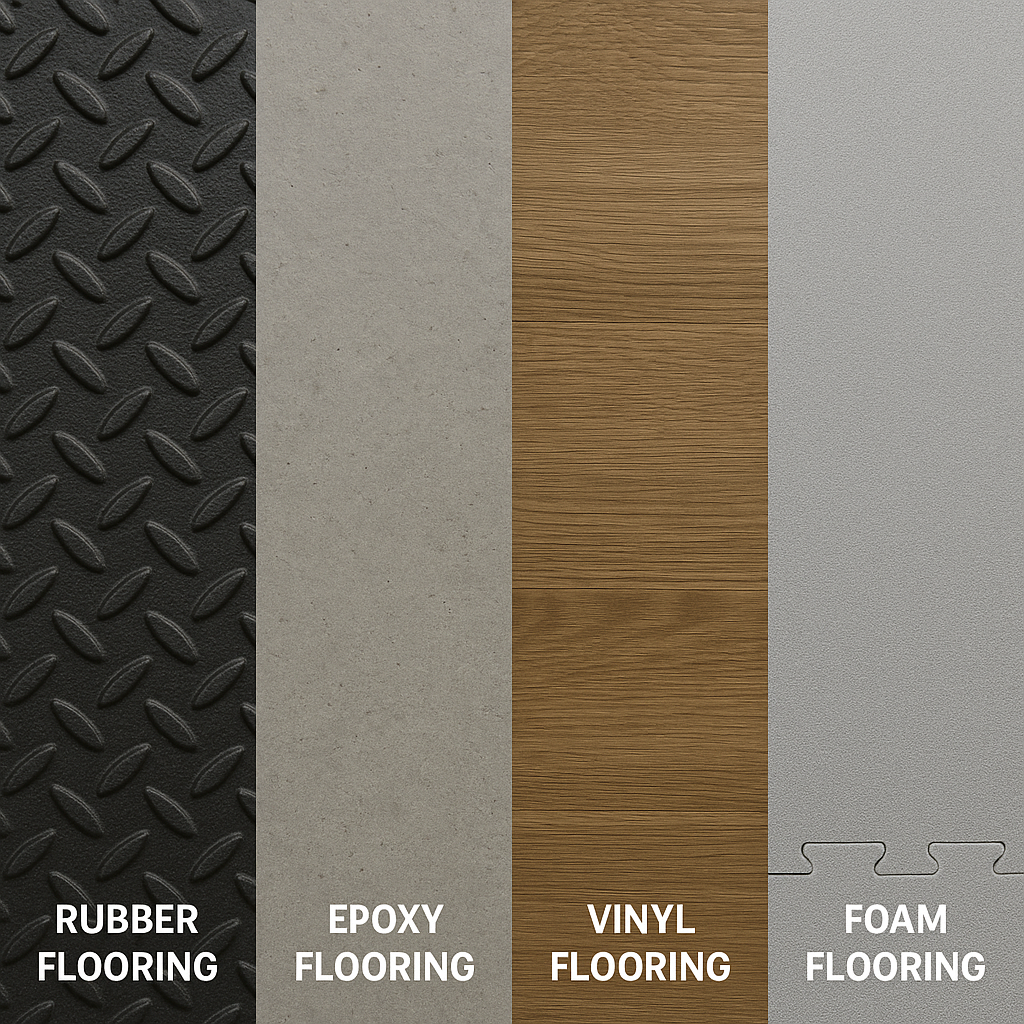
Rubber Flooring vs Other Gym and Workshop Flooring Options: Which is Best?
Share
When setting up a home gym or designing a high-performance workshop, one of the most important—and often overlooked—choices you'll make is the flooring. While gym equipment or power tools usually steal the spotlight, the type of flooring you choose can significantly affect comfort, safety, noise control, and long-term durability.
Among all the options, rubber flooring has become a top choice for gym owners, fitness enthusiasts, and workshop DIYers. But how does rubber flooring compare to alternatives like foam tiles, vinyl planks, epoxy coatings, and concrete?
In this article, we’ll break down the pros and cons of each type to help you choose the best flooring for your gym or workshop.
Why Flooring Matters in Gyms and Workshops
Flooring in gyms and workshops needs to do more than just look good. It must:
- Withstand high traffic and heavy weights
- Absorb shock and reduce joint impact
- Resist slipping, even when wet
- Be easy to clean and maintain
- Handle dropped tools or fitness equipment
Let’s take a closer look at how rubber flooring performs compared to other common flooring materials such as Epoxy, Concrete, Foam and Vinyl.
1. Durability: Built to Last
- Rubber Flooring: Designed to absorb impact and resist wear and tear. Perfect for high-traffic home gyms, commercial fitness centers, or industrial workshops.
- Foam Flooring: Comfortable but not durable. It can tear or compress under heavy machines.
- Vinyl Flooring: Moderately durable but prone to scratches or gouges in tough environments.
- Epoxy Coatings: Extremely durable when properly installed. Ideal for garage workshops.
- Concrete Floors: Naturally durable but prone to cracking and hard on tools.
Best for Durability: Rubber flooring and epoxy coatings.
2. Comfort & Shock Absorption
- Rubber: Provides superior comfort underfoot. Absorbs shock, which reduces joint stress and fatigue.
- Foam: Soft and cushiony, but lacks the support needed for lifting weights or supporting machinery.
- Vinyl: Offers minimal cushioning. Usually installed with a padded underlayment for extra comfort.
- Epoxy & Concrete: Very hard surfaces. Long periods of standing can cause discomfort.
Best for Comfort: Rubber flooring, hands down.
3. Safety & Slip Resistance
- Rubber Flooring: Naturally slip-resistant—even when wet or sweaty. A safe option for any gym or workshop.
- Foam: Grippy when dry, but can become slick with moisture.
- Vinyl: Decent grip, depending on surface texture.
- Epoxy: Can be slippery unless treated with anti-slip additives.
- Concrete: Extremely slippery when wet unless textured.
Best for Safety: Rubber flooring for gyms and workspaces with moisture or sweat exposure.
4. Maintenance & Cleaning
- Rubber: Simple to clean with mild soap and water. Doesn’t trap dirt or absorb odors.
- Foam: Easy to wipe down, but can absorb moisture and develop odors over time.
- Vinyl: Low-maintenance and easy to clean.
- Epoxy: Resistant to stains, oil, and chemicals. Very easy to clean.
- Concrete: Requires sealing to resist stains and dirt. Can be difficult to keep clean.
Best for Easy Maintenance: Epoxy, followed closely by rubber flooring.
5. Installation Process
- Rubber Tiles or Rolls: Easy DIY installation. Interlocking rubber tiles are especially popular for home gyms.
- Foam Mats: Extremely easy to install. Great for temporary or budget-friendly setups.
- Vinyl Planks: Click-lock or adhesive-backed options are user-friendly.
- Epoxy Coatings: Requires professional installation and curing time.
- Concrete Finishes: Usually already in place, but customization (sealing, staining) takes work.
Best for DIY Installation: Rubber flooring tiles and foam mats.
6. Cost Comparison
- Rubber Flooring: Mid-range cost. Higher than foam or vinyl but offers greater long-term value.
- Foam Tiles: Budget-friendly option for light use.
- Vinyl Flooring: Affordable and attractive, but less durable.
- Epoxy Flooring: Higher upfront cost but lasts for years.
- Concrete: Cheap if already present, but customizing can add to the price.
Best for Value: Rubber flooring offers the best balance between cost, durability, and performance.
Is Rubber Flooring Worth It?
If you’re building a garage gym, upgrading a home fitness studio, or setting up a functional workshop, rubber flooring is one of the most versatile and reliable flooring solutions available.
Key Benefits of Rubber Flooring:
- Exceptional durability
- Slip-resistant and safe
- Comfortable for standing and high-impact activities
- Easy to clean
- DIY-friendly installation
While foam and vinyl may be cheaper up front, and epoxy may offer industrial strength, rubber flooring hits the sweet spot for both performance and practicality.
Optimize Your Space with Rubber Gym or Workshop Flooring
Looking to upgrade your gym or workspace? Invest in premium rubber flooring tiles or rolls that will stand the test of time. Whether you’re lifting weights or working with power tools, rubber flooring offers the safety, comfort, and durability you need.
